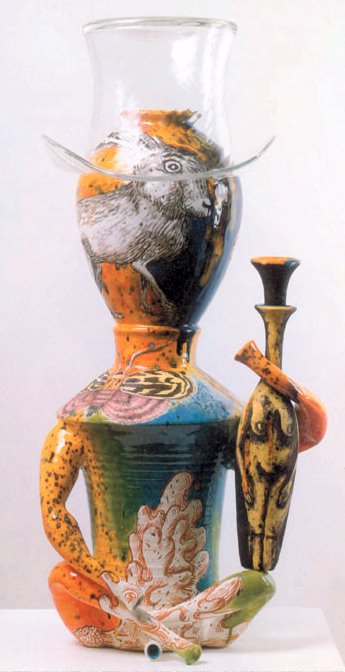

Mars has large amounts of iron oxide. You can make a replica of Martian soil. Within one week, the iron particles in your replica soil should rust and create the familiar red color of the Martian surface.

To do: Mix together sand and rocks to cover the bottom of the jar. Add
about one tablespoon of cut up steel wool pads or iron filings. Spray the
surface with water, about three sprays or until moist. Do not mix or shake
after wetting the surface. Make observations for a week. What does this
mean about the composition of Mars soil?
Mars has less gravitational pull and less atmosphere than Earth, so
there is less friction and less heating. More meteors make it to the Martian
surface and therefore more craters are made. On impact, the energy from
the collision melts the surfaces—of the planet and the meteorite. The molten
material bounces away from the surface. Planets with less gravity permit
the material to travel farther before being pulled back to the surface
of the planet, so the crater rings are larger and have lower walls. There
is little evidence of craters on Earth because active geological processes
on Earth, such as erosion and Earth movements, erase them over time
To do: Predict what patterns will form if you drop a metal ball bearing to represent a meteorite into a dish pan with a deep layer of flour. Drop the meteorite—what was the shape of the crater? Carefully remove the meteorite with a magnet and measure the width and depth.
Then test how different sizes and shapes of meteorites (use different size ball bearings or various other metal objects) affect crater formation. Design an experiment to test if meteors falling at different speeds affect crater formation. (The longer an object falls, the more gravity will accelerate the rate of the fall.)
For more Mars fun, check out these websites: Mars Pathfinder Project
at www.jpl.nasa.gov and Ames Center for
Mars Exploration at www.arc.nasa.gov

By combining shapes of things you see at home like milk bottles, teapots,
or flower vases, you can design your own figure and cover it with pictures
of your favorite things. Look around for shapes to sketch, or trace shapes
from Lucero’s sculpture that you see in this magazine. When you have arranged
your shapes as you like, glue them down to a large piece of paper. Now
you’re ready to add pictures to the "person" you have created. Use crayons,
markers, or colored pencils to add pictures from your imagination or from
the world around you. Or ask an adult to help you cut pictures out of other
magazines to combine with your drawings. Will you add a glass hat? What
would be a good name for your creation? Maybe you can imagine an adventure
your character will take.
Copyright 1998 Carnegie Magazine
All rights reserved. Email: carnegiemag@carnegiemuseums.org
Highlights |
Calendar |
Back Issues |
Museums |